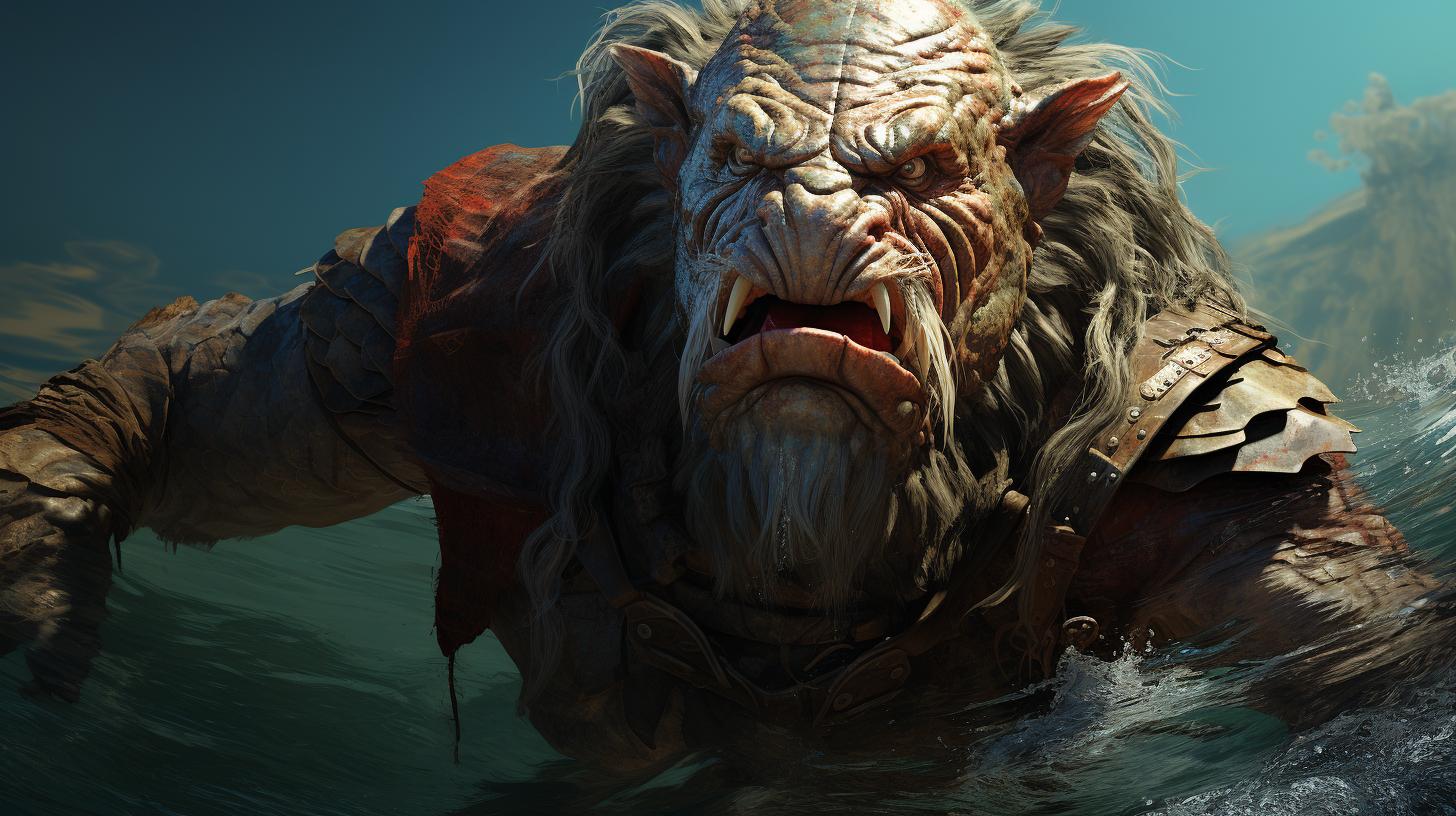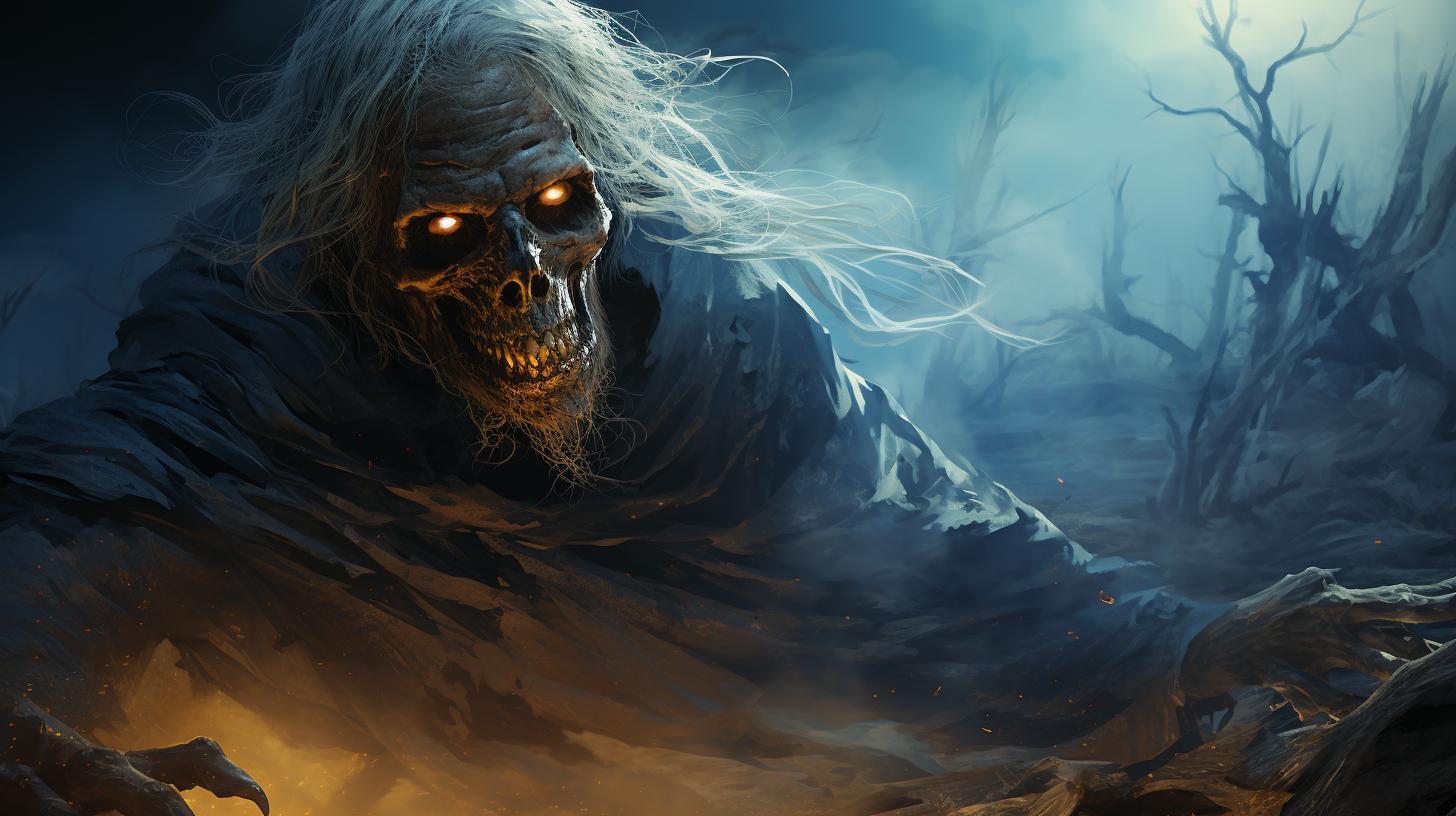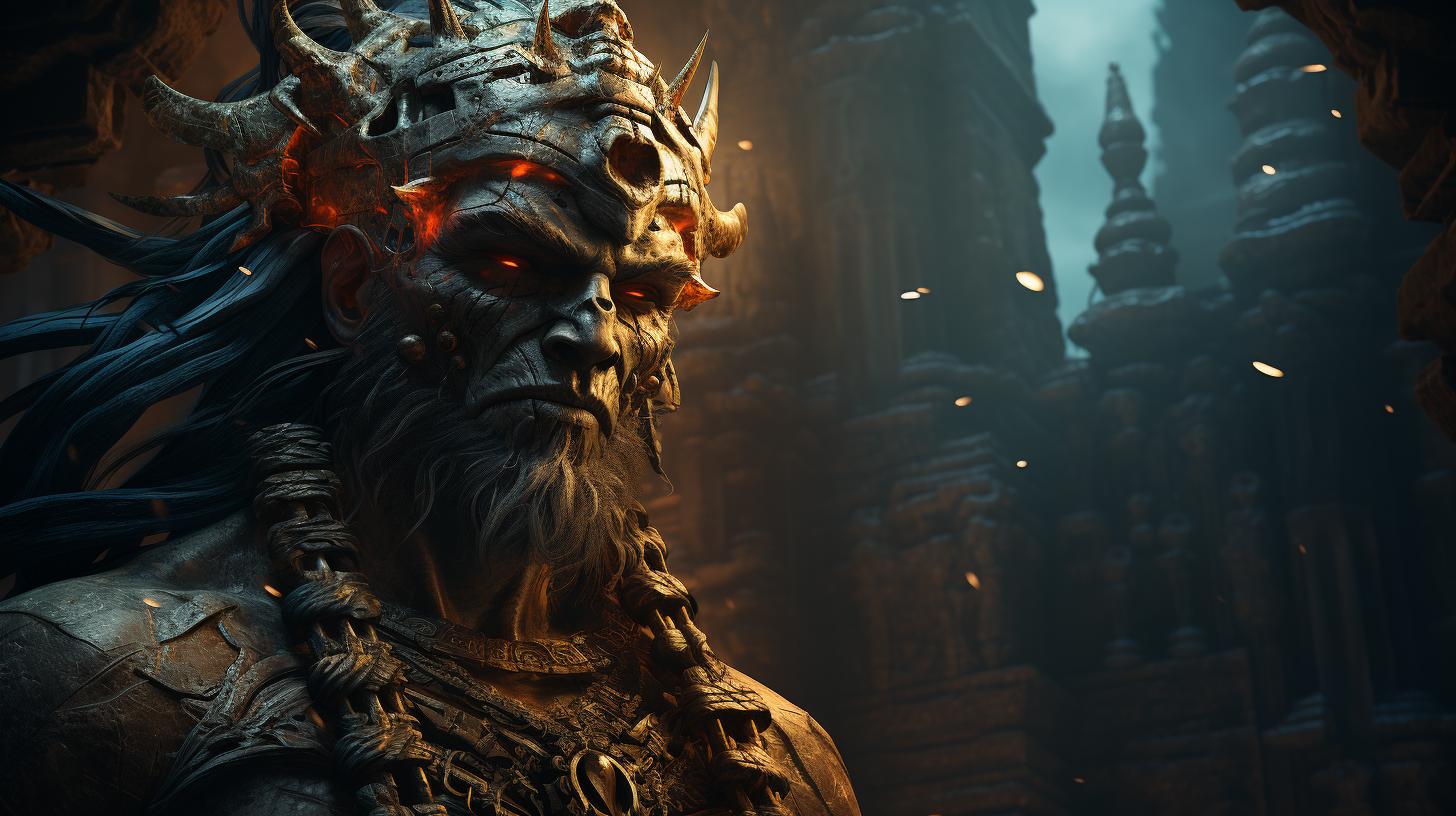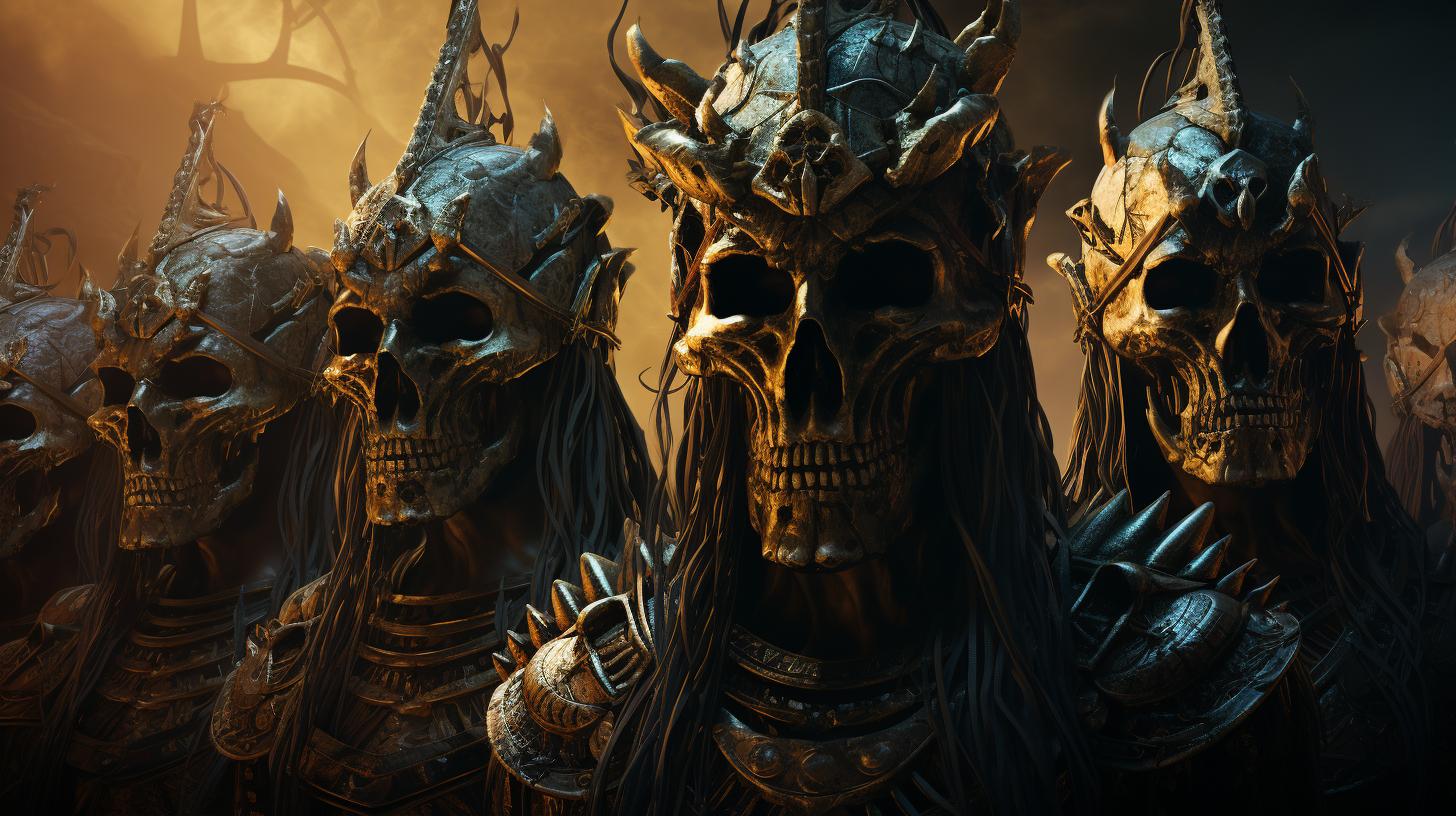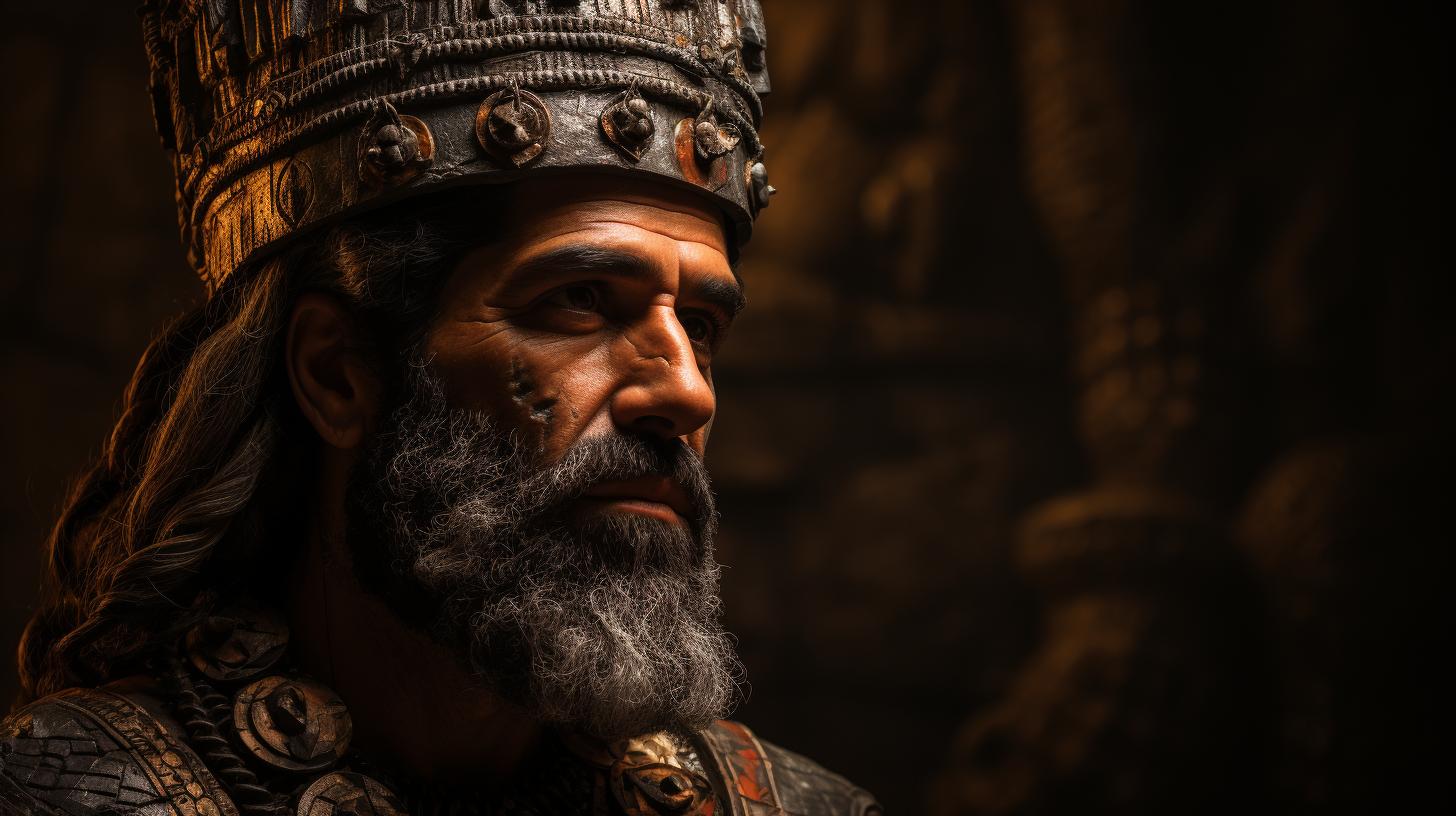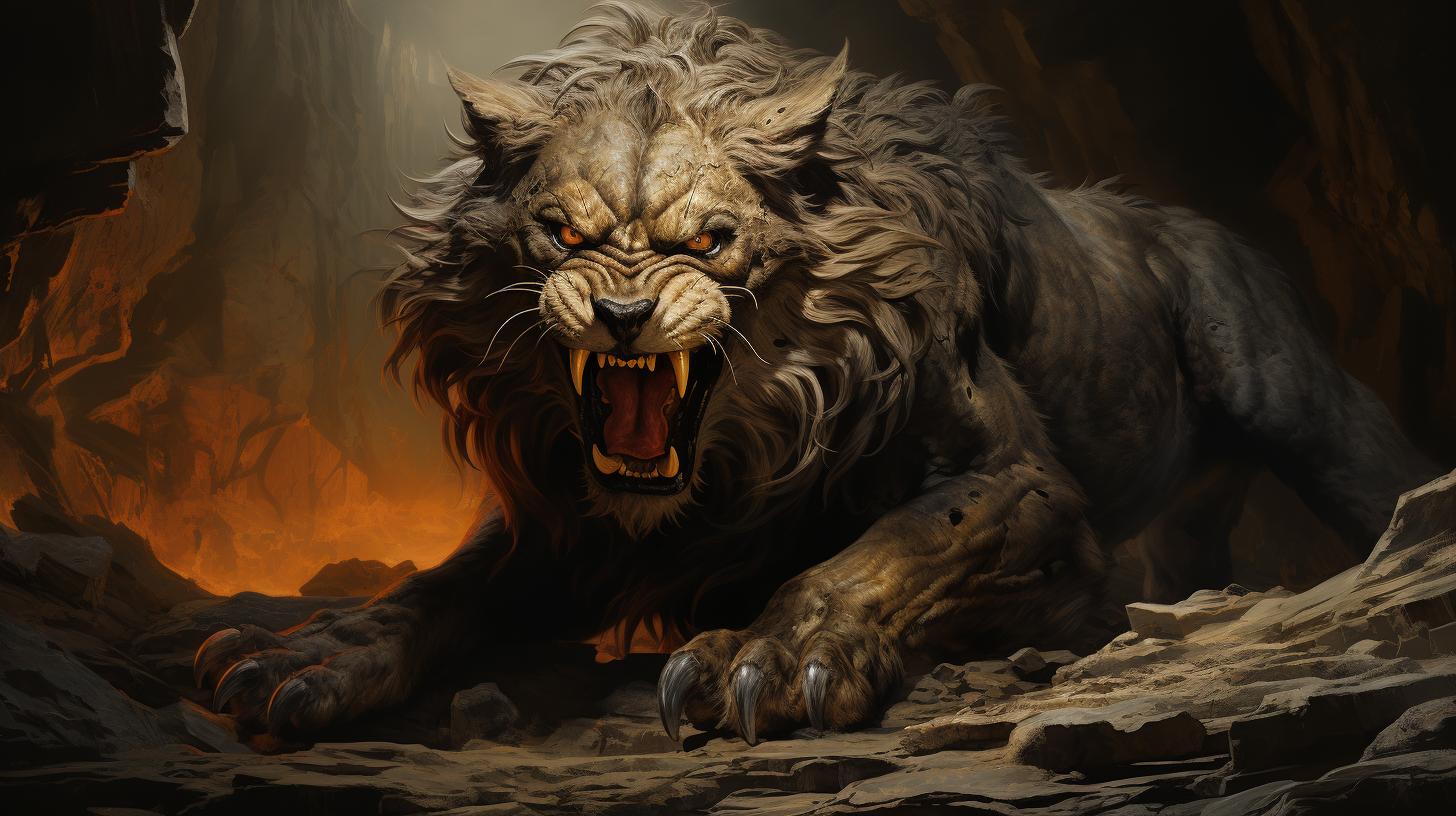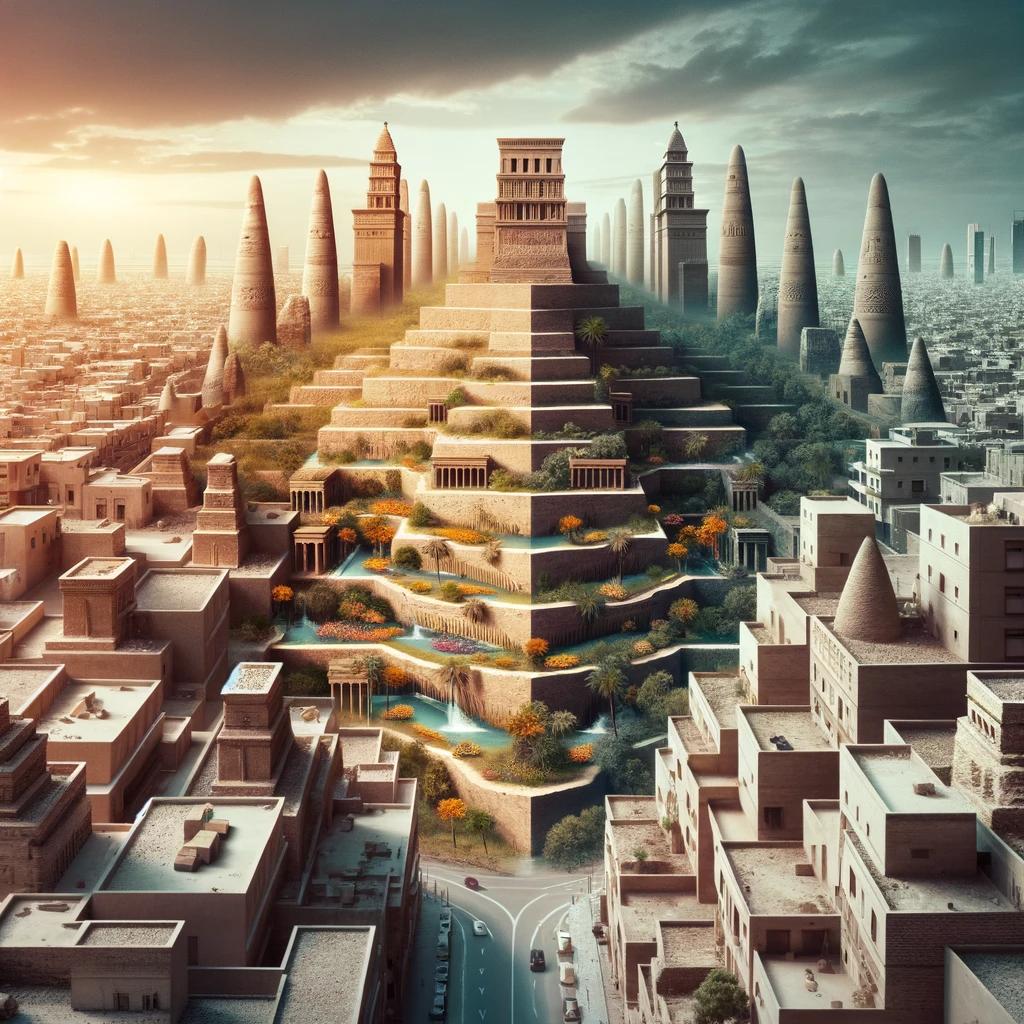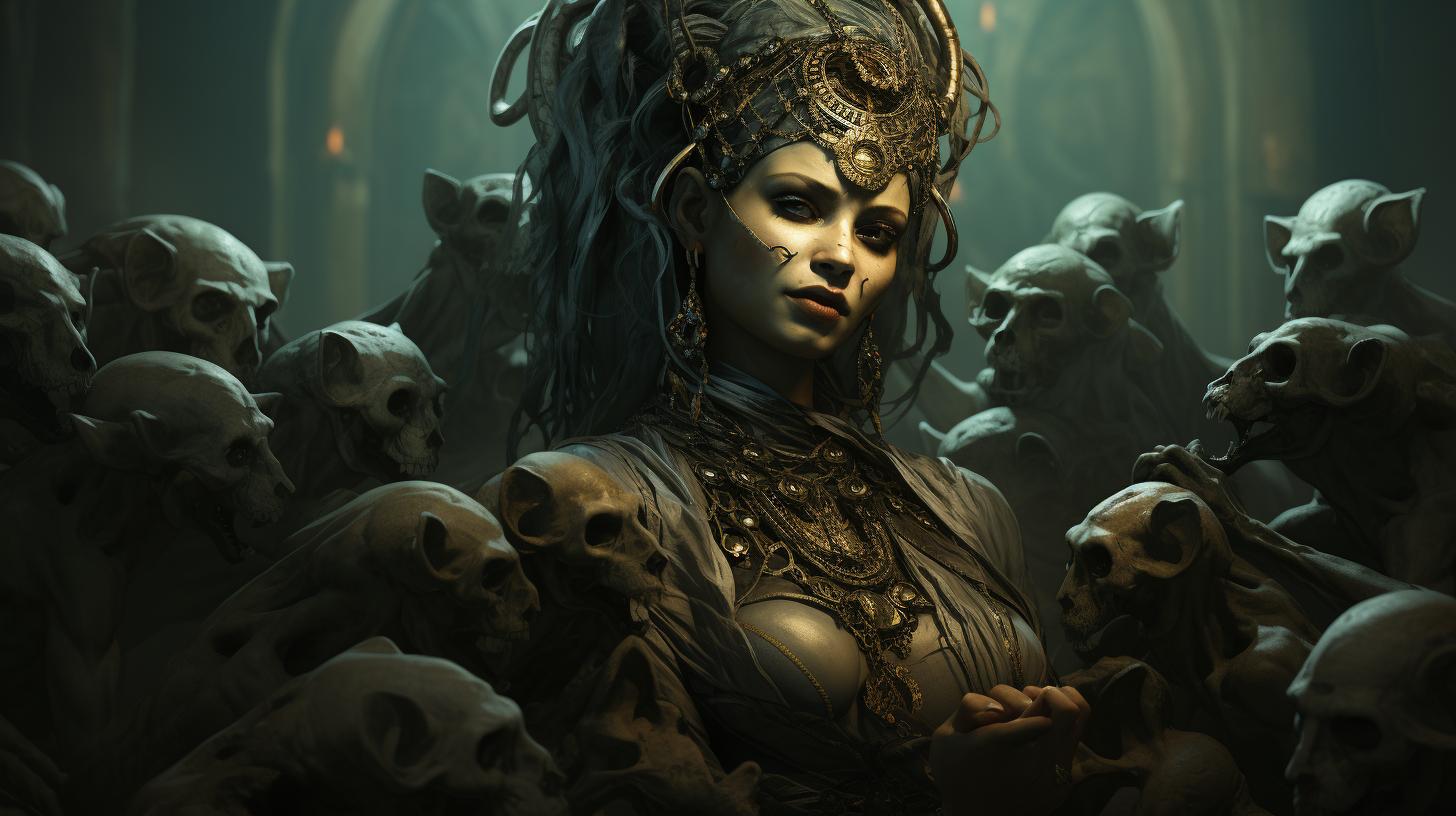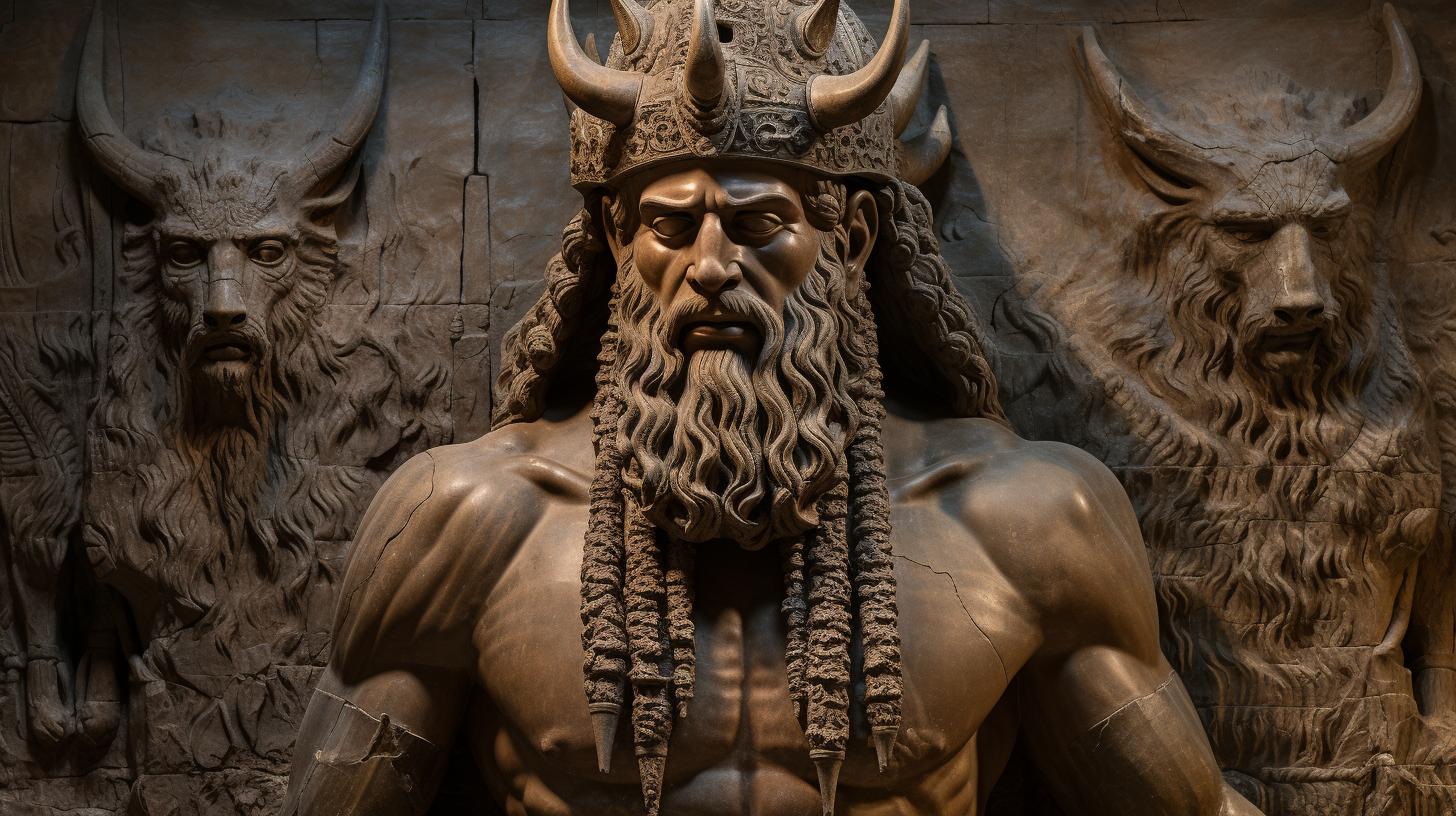Exploring the Enchanting World of Kulullu Mythology
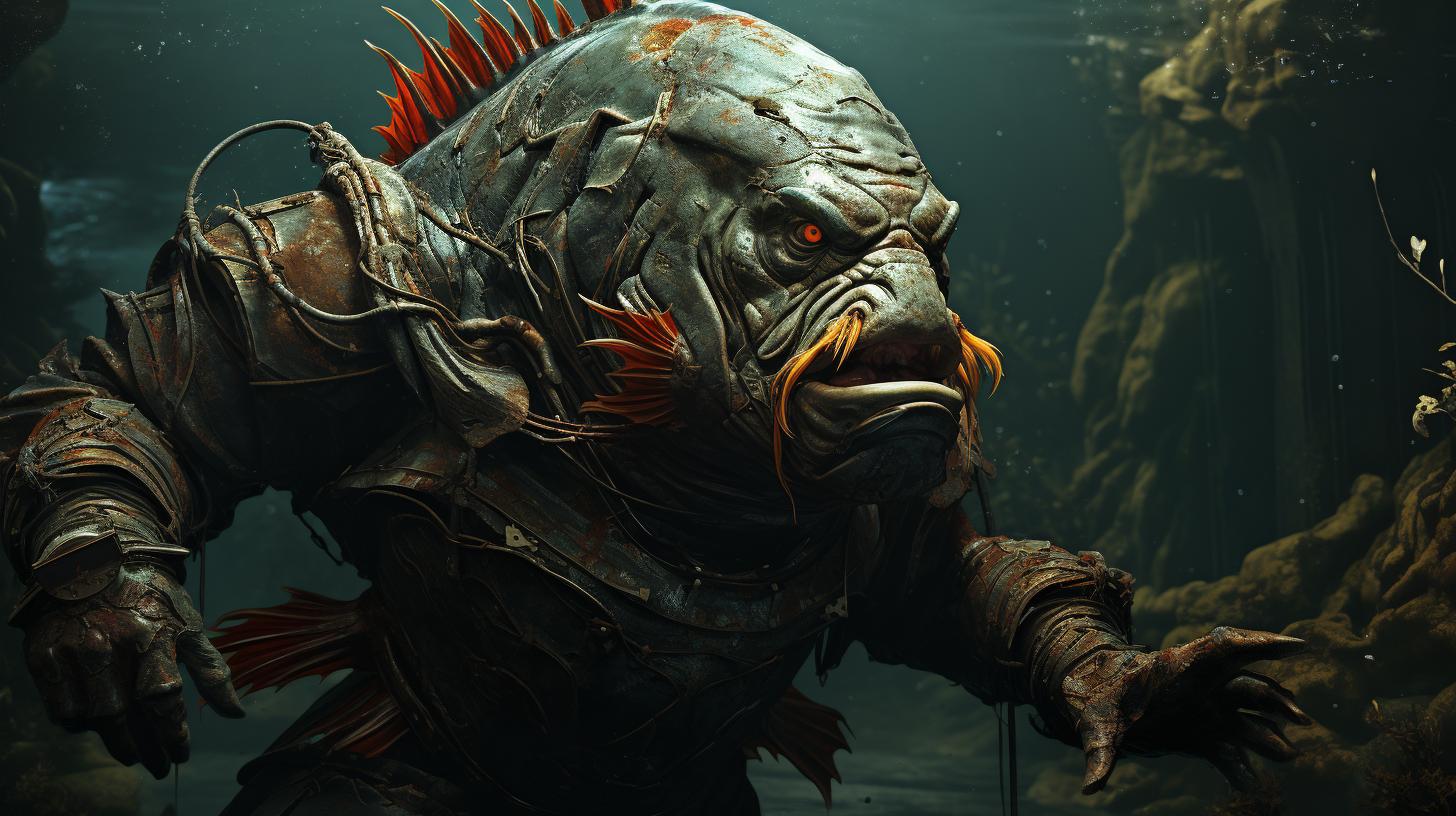
Kulullu mythology originated in ancient Mesopotamia, showcasing a fascinating world of mythical beings and creatures related to fish. The apkallu or abgal were revered as wise individuals who bestowed humanity with knowledge and skills.
One prominent figure is the Kulullû, a fearsome monster with a human head, arms, and torso, and a fish-like lower body. Depicted alongside the suhurmāšu or capricorn, the Kulullû brought forth water and prosperity.
This ancient mythology encompasses iconography, references to other deities, merfolk lore, significant locations, mythological enemies, and various elements and puzzles. Its influence is evident in modern culture, inspiring literature, art, and adaptations.
Origins of Kulullu Mythology in Ancient Mesopotamia
The origins of Kulullu mythology can be traced back to ancient Mesopotamia, where it flourished and became an integral part of the culture and beliefs of the region. This rich mythological tradition revolves around the mythical beings and creatures related to fish.
Let us delve into the fascinating world of Kulullu mythology and explore its intriguing origins, beginning with the role of Apkallu and Abgal as wise beings.
The Role of Apkallu and Abgal as Wise Beings
Within Kulullu mythology, the Apkallu and Abgal beings hold significant importance. They are revered as wise individuals who bestowed upon humanity the knowledge and arts that enriched their lives. These ancient sages were responsible for imparting various skills, including agriculture, craftsmanship, and the development of societal structures.
Considered as intermediaries between humans and gods, the Apkallu and Abgal played a pivotal role in shaping Mesopotamian civilization.
The Mythical Creature – Kulullû: Inheritance and Description
One of the prominent mythical creatures in Kulullu mythology is the fearsome Kulullû. This creature inherited its existence from Marduk’s father, Ea. With a unique and striking appearance, the Kulullû is depicted with the head, arms, and torso of a human, while its lower body and tail resemble that of a fish.
Often found alongside the suhurmāšu or capricorn, the Kulullû symbolizes water and abundance.
The primary function attributed to the Kulullû is to bring water from the heavens and mountains, ensuring prosperity and abundance, be it in terms of wealth or agricultural outcomes.
Its depiction in Mesopotamian art can be traced back to ancient times, such as in the temple of Nabú in Nimrud. Additionally, the Kulullû finds mention as one of the monstrous offspring of Tiāmat in the Epic of Creation and is linked to the deity Dagon.
The Iconography of Kulullu in Mesopotamian Art
The iconography of Kulullu in Mesopotamian art provides fascinating insights into the depiction and symbolism of this mythical creature. Representations of the Kulullû can be found in various temples and artifacts, showcasing its unique appearance and cultural significance.
Depictions of Kulullû in Temples and Artifacts
Temples throughout Mesopotamia feature intricate carvings and reliefs that depict the Kulullû. These representations often showcase its distinct physical characteristics – a human upper body with the head, arms, and torso, combined with the lower body and tail of a fish.
The combination of these elements highlights the creature’s connection to both the human and aquatic realms.
A notable example of Kulullû iconography can be found in the temple of Nabú in Nimrud, where a relief carving depicts the creature in its characteristic form.
The imagery emphasizes its role as a bringer of water and prosperity, as it is depicted holding a stream of water or a water-spouting implement.
Other artifacts, such as seals and amulets, also feature representations of the Kulullû.
These intricate designs often showcase the creature in various poses, further emphasizing its role as a mediator between the heavens, the earth, and the seas.
Symbolism and Meaning in the Representation of Kulullû
The representation of the Kulullû holds deep symbolism and meaning within Mesopotamian culture.
Its hybrid nature, combining human and fish characteristics, signifies the interconnectedness of land and water, as well as the balance between different realms of existence.
The Kulullû’s association with water is significant as it is believed to be able to bring forth water from the celestial and mountainous sources.
This symbolism of water represents not only physical nourishment but also spiritual and metaphorical abundance and prosperity.
Furthermore, the Kulullû’s portrayal as a figure associated with abundance and prosperity extends to both monetary and agricultural domains.
It is seen as a bringer of blessings, ensuring fertility and success in economic endeavors.
Additionally, the presence of the Kulullû in Mesopotamian art reflects the reverence for mythological creatures and their role in the spiritual and cultural beliefs of the ancient civilization.
The imagery evokes a sense of wonder and awe, showcasing the rich mythological tapestry of Mesopotamian society.
Kulullu and Its Connection to Other Credences
The intricate mythology of Kulullu extends beyond its own realm, intertwining with other ancient beliefs and deities. This section explores two notable connections: the Eleven Monstrous Spawn from Tiamat’s epic and Kulullu’s association with Dagon and other deities.
The Eleven Monstrous Spawn and Tiamat’s Epic
Within the grand narrative of Tiamat’s epic, the Kulullû stands out as one of the eleven monstrous spawn. These creatures, born from the primordial chaos, represented the embodiment of chaos and destruction.
Through their inclusion in the epic, the Kulullû gained further significance as a symbol of the eternal struggle between order and chaos.
Kulullu’s Association with Dagon and Other Deities
Another noteworthy aspect of Kulullu mythology lies in its connection to Dagon, a prominent deity worshipped in ancient Mesopotamia. Dagon, often depicted as a fish-like creature himself, shares similarities with the Kulullû in iconography and symbolism.
This association suggests a shared mythology or overlapping religious beliefs within ancient Mesopotamian cultures.
As Kulullu mythology continues to captivate scholars and enthusiasts alike, these connections to other ancient beliefs shed light on the broader cultural significance of this fascinating mythos.
Mermen and Mermaid Folklore in Connection to Kulullu
Merfolk play a significant role in Kulullu mythology, intertwining the realms of land and sea. Here, we explore the fascinating characteristics and abilities attributed to these mythical beings, along with their interactions with humans and the realm of commerce.
Additionally, we delve into the intriguing dynamics of merfolk society, including population size and the presence of leaders among their ranks.
Characteristics and Abilities of Merfolk
Merfolk possess a unique blend of fish and human features, with their lower bodies resembling that of a fish and their upper bodies bearing human torsos, arms, and heads. These enchanting creatures have the ability to breathe underwater, navigating effortlessly through aquatic environments.
They are known to wield weapons such as daggers, spears, and tridents, showcasing their mastery over their watery domain.
Interactions with Humans and Commerce
Merfolk occasionally engage in interactions with human populations, forging connections through trade and commerce. They have been documented as active participants in the exchange of goods and services, utilizing their aquatic expertise to procure rare resources and precious artifacts from the depths of the sea.
These encounters with humans often give rise to legends and tales of mesmerizing encounters between the two worlds.
Population and Leadership Among Merfolk
The population of merfolk communities varies, with numbers typically ranging from 100 to 300 individuals. Within these societies, leaders emerge to guide and govern their fellow merfolk. These leaders possess diverse levels of power and influence, ensuring the cohesion and prosperity of their underwater communities.
Additionally, merfolk communities often possess various marine creatures serving as guardians, protecting their homes and territories.
Prominent Characters and Locations in Kulullu Mythology
Elder Xelpud, Lemeza Kosugi, and Mulbruk
Elder Xelpud, Lemeza Kosugi, and Mulbruk are significant characters in Kulullu mythology. Elder Xelpud is a revered elder known for his extensive knowledge of mythological lore. Lemeza Kosugi is a brave adventurer who embarks on quests to uncover the secrets of the ancient Kulullu civilization.
Mulbruk, a wise guardian, provides guidance and assistance to those seeking to explore the depths of Kulullu mythology.
The Gate of Guidance and Other Sacred Sites
The Gate of Guidance holds immense importance in Kulullu mythology. It is believed to be the threshold to the mythical realm where Kulullu creatures reside. Other sacred sites, such as the Mausoleum of the Giants and the Temple of the Sun, also play crucial roles in the mythological narrative, serving as places of power and revelation.
Mythological Places and Their Significance
- The Mausoleum of the Giants: A majestic structure where the ancient giants of Kulullu mythology are said to rest in eternal slumber. It is regarded as a place of reverence and mystery.
- The Temple of the Sun: A sacred temple dedicated to the sun god in Kulullu mythology.
It is believed to be a gateway to divine knowledge and enlightenment.
- The Caverns of Wisdom: Fabled underground chambers where hidden wisdom and ancient secrets are said to reside. Explorers who dare to venture into these depths may gain profound insights into Kulullu mythology.
- The Lake of Abundance: A mystical body of water associated with the Kulullu creatures.
It is believed to possess transformative properties, bringing prosperity and abundance to those who encounter it.
These mythological places hold great significance in the Kulullu lore, offering glimpses into the hidden realms and ancient mysteries of this captivating mythology.
Mythical Enemies and Creatures in Kulullu Mythology
The world of Kulullu mythology is filled with a diverse array of formidable adversaries and intriguing creatures. These entities play a significant role in the epic tales and legends of Mesopotamia.
From fearsome beings to ancient demons, the mythology is filled with captivating and awe-inspiring characters.
Amphisbaena, Sakit, and Other Adversaries
One of the notable adversaries in Kulullu mythology is the Amphisbaena, a serpent-like creature with a head on both ends of its body. Its deadly venomous bite strikes fear into the hearts of those who face it.
Another formidable foe is Sakit, a demonic entity associated with disease and plague. Sakit possesses a malevolent presence and is said to bring suffering and misery wherever it roams.
The mythology also encompasses other adversaries, each with their own unique characteristics and powers.
These creatures, such as Elmac and Bahamut, challenge the heroes of the stories, testing their courage and wit.
Demons Listed in the Mesopotamian Texts
The ancient Mesopotamian texts mention a plethora of demons that inhabit the mythological landscape of Kulullu. These demons are often associated with chaos, destruction, and the forces of evil. One of the prominent demons is Viy, a malevolent spirit known for its ability to bring nightmares and torment the souls of the living.
Another notable demonic entity is Baphomet, a symbol of darkness and forbidden knowledge. Baphomet is often depicted as a goat-headed figure, embodying the connection between the earthly and spiritual realms.
These demons and other malevolent entities add depth and complexity to the narratives of Kulullu mythology, providing a constant source of conflict and challenges for the heroes and mythical beings that dwell within this ancient lore.
Elements and Artifacts Associated with Kulullu Mythology
The rich mythology of Kulullu is intertwined with various elements and artifacts that hold significant importance in its lore. These elements include weapons, sub-arms, collectibles, puzzles, challenges, and different endings and achievements.
Weapons, Sub-Arms, and Collectibles
Within the realm of Kulullu mythology, a diverse array of weapons and sub-arms played vital roles in battles and quests. These artifacts are often depicted in ancient texts and artwork, showcasing their unique designs and powers.
Additionally, collectors and enthusiasts value various Kulullu-themed collectibles that showcase the culture and mythology of this ancient civilization.
Puzzles and Challenges in Kulullu Mythology
Kulullu mythology presents a variety of puzzles and challenges that are central to the narrative and gameplay experience. From intricate block puzzles to enigmatic La-Mulanese riddles, these challenges test the wit and skills of those seeking to unravel the secrets of Kulullu’s world.
By overcoming these obstacles, adventurers can progress further and gain deeper insights into the mythology.
Various Endings and Achievements in Kulullu Mythology
Explorers of Kulullu mythology have the opportunity to uncover multiple endings and achievements as they traverse its mythical realm. These endings and achievements offer different outcomes and rewards based on the choices made, the success in overcoming challenges, and the exploration of hidden paths.
These diverse conclusions add depth and replayability to the captivating world of Kulullu mythology.
Exploring Kulullu Mythology in Modern Culture
The rich mythology of Kulullu continues to captivate and inspire modern culture in various forms of expression, notably in literature, art, and adaptations across different media. The enduring influence of Kulullu mythology can be seen in both contemporary works and those throughout history.
Influence of Kulullu Mythology in Literature and Art
Kulullu mythology has been a source of inspiration for numerous writers and artists, who have incorporated its themes, symbolism, and characters into their works. Novels, poetry, and graphic novels have explored the epic tales and intricate lore, offering readers captivating narratives steeped in ancient Mesopotamian mythology.
Artists, too, have been fascinated by the visual representation of Kulullu beings. From ancient artworks found in temples and artifacts to modern paintings, sculptures, and digital art, the iconic image of the Kulullû – with its human upper body and fish-like lower body – continues to be a source of artistic exploration and interpretation.
Moreover, the symbolism and messages conveyed through Kulullu mythology have influenced various artistic movements, allowing artists to express ideas of abundance, prosperity, and the connection between humans and the natural world.
Cultural References and Adaptations of Kulullu Mythology
Kulullu mythology has also made its way into popular culture through various adaptations and cultural references. Movies, television shows, and video games often draw inspiration from the rich and imaginative universe of Kulullu mythology, creating immersive experiences for audiences.
These adaptations range from epic fantasy films that bring to life the battles between mythical creatures to video games that allow players to explore ancient Mesopotamian landscapes and encounter Kulullu-inspired beings.
By incorporating elements of Kulullu mythology, these adaptations offer a fresh perspective on ancient legends and introduce the captivating world of Kulullu to new audiences.
Furthermore, Kulullu mythology has influenced other areas of popular culture, including music, fashion, and design.
Artists and designers often draw inspiration from the captivating imagery and symbolism associated with Kulullu beings, incorporating them into their creations, thus bringing forth a modern interpretation of this ancient mythology.
In conclusion, Kulullu mythology continues to thrive and evolve in modern culture, impacting literature, art, and various forms of adaptations. Its profound influence can be seen in the continued exploration of its themes and characters, as well as in the artistic expressions and adaptations that keep this ancient mythology alive and relevant in the contemporary world.
.











